Balkinization
an unanticipated consequence of
Jack M. Balkin
Balkinization Symposiums: A Continuing List
E-mail:
Jack Balkin:
jackbalkin at yahoo.com
Bruce Ackerman
bruce.ackerman at yale.edu
Ian Ayres
ian.ayres at yale.edu
Corey Brettschneider
corey_brettschneider at brown.edu
Mary Dudziak
mary.l.dudziak at emory.edu
Joey Fishkin
joey.fishkin at gmail.com
Heather Gerken heather.gerken at yale.edu
Abbe Gluck abbe.gluck at yale.edu
Mark Graber
mgraber at law.umaryland.edu
Stephen Griffin
sgriffin at tulane.edu
Jonathan Hafetz
jonathan.hafetz at shu.edu
Jeremy Kessler
jkessler at law.columbia.edu
Andrew Koppelman
akoppelman at law.northwestern.edu
Marty Lederman
msl46 at law.georgetown.edu
Sanford Levinson
slevinson at law.utexas.edu
David Luban
david.luban at gmail.com
Gerard Magliocca
gmaglioc at iupui.edu
Jason Mazzone
mazzonej at illinois.edu
Linda McClain
lmcclain at bu.edu
John Mikhail
mikhail at law.georgetown.edu
Frank Pasquale
pasquale.frank at gmail.com
Nate Persily
npersily at gmail.com
Michael Stokes Paulsen
michaelstokespaulsen at gmail.com
Deborah Pearlstein
dpearlst at yu.edu
Rick Pildes
rick.pildes at nyu.edu
David Pozen
dpozen at law.columbia.edu
Richard Primus
raprimus at umich.edu
K. Sabeel Rahmansabeel.rahman at brooklaw.edu
Alice Ristroph
alice.ristroph at shu.edu
Neil Siegel
siegel at law.duke.edu
David Super
david.super at law.georgetown.edu
Brian Tamanaha
btamanaha at wulaw.wustl.edu
Nelson Tebbe
nelson.tebbe at brooklaw.edu
Mark Tushnet
mtushnet at law.harvard.edu
Adam Winkler
winkler at ucla.edu
Compendium of posts on Hobby Lobby and related cases
The Anti-Torture Memos: Balkinization Posts on Torture, Interrogation, Detention, War Powers, and OLC
The Anti-Torture Memos (arranged by topic)
Recent Posts
What’s Louisiana v. Callais About? Not Louisiana.
Just A Few Blogs
ACS Blog
Alas, a Blog
Althouse
Arts and Letters Daily
Atrios (Eschaton)
Bill of Health
Buzzflash.com
Buzz Machine
Cato at Liberty
Juan Cole (Informed Comment)
Concurring Opinions
The Constitution in 2020
Corrente
Crooked Timber
Daily Howler
Daily Kos
Dana Boyd
Brad DeLong
Digby (Hullabaloo)
Discriminations
Daniel Drezner
Kevin Drum (Mother Jones)
Electrolite
En Banc
Eunomia (Daniel Larison)
Fafblog
Michael Froomkin (Discourse.net)
GovLab (Beth Noveck)
Rick Hasen (Election Law)
History News Network
How Appealing
Ignatz (Sam Heldman)
The Importance of (Ernie Miller)
Infolaw
Instapundit
International Economic Law and Policy Blog
IntLawGrrls
Jacob Levy
Jesus' General
Jurisdynamics
The Kitchen Cabinet
Mark Kleiman
Law Blog Central
Larry Lessig
Lawyers, Guns and Money
Liberal Oasis
Brian Leiter's Law School Reports
The Leiter Reports
Marginal Revolution
Megan McArdle
Memeorandum
Metafilter
Mirror of Justice
The New Republic
Newseum
No More Mister Nice Blog
Brendan Nyhan
Opinio Juris
Orcinus
The Originalism Blog
Pandagon
Passport (Foreign Policy)
Overcoming Bias
Political Animal (Washington Monthly)
Political Theory Daily Review
Political Wire (Taegan Goddard)
The Poor Man
Virginia Postrel
Prawfsblawg
Public Reason
Jonathan Rauch
Raw Story
Redstate
ReligiousLeftLaw.com
Reporters Committee For Freedom of the Press
Reproductive Rights Blog
Rothman's Roadmap to the Right of Publicity
SCOTUS Blog
Seeing the Forest
Clay Shirky
The Shifted Librarian
The Situationist
Larry Solum (Legal Theory)
Andrew Sullivan
Talking Points Memo
Talk Left
Tapped
Tbogg
TechPresident
The Paper Chase (Jurist)
Tom Paine
Tom Tomorrow (This Modern World)
Eve Tushnet
Uggabugga
University of Chicago Law School Faculty Blog
Unqualified Offerings
The Volokh Conspiracy
War and Piece (Laura Rozen)
Wampum
Oliver Willis
Wonkette
Written Description
Matthew Yglesias
Yin
Your Choice of Feeds
1. XML
powered by
2. Atom Feed
3. RSS 2.0
What’s Louisiana v. Callais About? Not Louisiana.
Stephen Griffin
Tomorrow the Supreme Court will
hear argument in Louisiana v. Callais, a congressional redistricting
case brought under section 2 of the Voting Rights Act. The litigation started as Robinson v.
Ardoin, a garden-variety case in which plaintiffs argued and the district
court in Baton Rouge found that the state legislature should be required to
create a second “opportunity district” in order to facilitate a racial minority
(in this case African Americans) electing a representative of their choice. Many commentators have speculated that the
Court will use the case to undermine section 2 or even rule it
unconstitutional. As I live in Louisiana, I wish I
had some spicy local knowledge to add to the news coverage. But in truth Callais is not so much
about anything that anyone in Louisiana did wrong. That the case exists at all should be put
down to multiple ill-advised interventions by the Court. Louisiana v. Callais should thus be
retitled Roberts and Rehnquist Courts v. Voting Rights Act. It is very much the Court’s story. The story is about how the Court created
unnecessary complications for a reasonably straightforward intervention by
Congress in 1982 into an untenable situation created by white southerners in
defense of their slipping political power.
It’s quite a story and one that is not easily told – which has led to
multiple articles by journalists saying somewhat weakly that the case is
“complicated.” It’s not just journalists. The Court’s insistence on another round of
oral argument has confused everyone. The
briefs are all over the map, guessing what might have drawn the Court’s
interest. I advance my own guess at the
end of this post. For now, some
exposition. It is useful to see the VRA as a
product of three historical moments (prior to Shelby County, that is). The first was the original adoption of the
law in 1965 under the auspices of the Fifteenth Amendment, aimed largely at
removing obstructions to registration and voting by African Americans in the
South. The second was the rise of the
“preclearance” mechanism – to be sure, this was in the original law, but its
reach was vastly extended by the Court’s 1969 decision in Allen v. Board of
Elections. Henceforth, even redistricting
decisions were subject to review by what was, in effect, an administrative
agency inside the DOJ devoted to maintaining a voting rights equilibrium with
respect to race. And the third was the
rewriting of section 2 in 1982 to, among other things, order courts to focus on
the results of what state and local governments were doing to alter electoral
laws to frustrate advancing minority political power. This third moment requires further
explanation. As African Americans began
registering and voting in large numbers after 1965, whites responded quickly by
changing electoral rules in ways designed to preserve their political power. A typical example was to move local and
county governments from district-based to at-large elections. Whites did this to preserve their majority
voting control over local bodies.
Litigation ensued with the Court announcing a practical test to
determine relief in White v. Regester, a formula that influenced Congress
when they amended section 2. But the
same Court imposed a roadblock in 1980 in City of Mobile v. Bolden,
imposing a difficult “intent” standard on plaintiffs. Voting rights proponents demanded a solution
and, as it happened, the VRA’s key preclearance provisions were up for renewal
in 1982, giving them a chance to work around Bolden’s approach. Litigation in the 1970s was
overwhelmingly concentrated at the local level.
If memory serves, more people
were noticing the uncomfortable reality that African Americans in the South, a
region where they were so numerous that they were almost a majority in some
areas, lacked substantial representation in Congress. In the 1970s the only members of the
Congressional Black Caucus (CBC) from the South were Barbara Jordan (Texas) and
Andrew Young (Georgia). This situation
seemed increasingly intolerable, especially considering it was created by what
would now be called racial gerrymandering by white state legislatures,
themselves gerrymandered to preserve the rule of the dominant majority. Section 2 was aimed at this
problem, but despite compiling a helpful legislative history, Congress ultimately
had trouble articulating a standard which district courts could apply. The Court came up with a workable formula in
the key case of Thornburg v. Gingles in 1986. The so-called Gingles preconditions were
added to the “totality of the circumstances” test embodied in section 2. Plaintiffs had to show they could constitute
a compact district in which they would be the majority and that they were
subject to racially polarized voting. Following
Gingles, Black representation in Congress from the South and in southern
state legislatures increased significantly.
There are still Black representatives in Congress (such as Rep. Bennie
Thompson from the Mississippi Delta) who took office in 1993 following the 1990
census, the first redistricting cycle held subject to section 2 and Gingles. Membership in the CBC expanded dramatically. Explaining what happened next still
vexes scholars. I like to use technical
language to my students in describing the Court’s still infamous 1993 decision
in Shaw v. Reno – that the Court freaked out at the increase in Black
representation (or, to be more charitable, what was required to achieve it
given conflicting goals such as protecting incumbents). To be more specific, the Court felt that the
guidance coming from the DOJ (led by Bush 41 AG Bill Barr!) was too aggressive. Yet the Court had great trouble articulating
a standard for what it termed racial gerrymandering – but it knew it when it
saw it. Just how the Court’s new cause
of action was consistent with the obvious thrust of section 2 was never
explained. This led to years of
inconclusive litigation, particularly in states like North Carolina – a perfect
example of a judicial test causing more trouble than it could ever solve. The final element in the back story
to Callais is a number of recent cases concerning race – certainly Shelby
County with its emphasis on the racial past being past, more technical
voting rights cases saying in effect that unconstitutional racial motives can
be separated easily from permissible partisan motives in drawing district
lines, and the Court’s most important recent intervention into the law of race
– SFFA, the anti-affirmative action decision. Taken together, these decisions create doubt
around the logic of section 2’s legislative history and the effort by the Court
in Gingles to separate cases that meet the “results” test, along with
the “totality of the circumstances” factor in section 2 from cases that fall
short. Some commentators have pointed to
Justice Kavanaugh’s concurrence in Allen v. Milligan as a danger
sign. This was the latest case to apply
section 2 to create a new minority opportunity district in Alabama. Kavanaugh gestured to the kind of analysis
used in Shelby County stressing that the need for legislation responding
to the machinations of the white majority may well have passed. As the briefs filed in Callais have
pointed out, however, there is no easy way to attack Gingles and section
2 along this line, as both impose a considerable ongoing burden on plaintiffs. I suggest one possible answer to
the puzzle Callais has posed for commentators and to the question of why
the Court has chosen this moment to cast a shadow on section 2 lies in the
relationship among these cases. Taken
together, they pose a challenge to the analysis the Court gave in Gingles
– especially with respect to the idea of ongoing “racial polarization” and the strong
historical emphasis of the totality of the circumstances test. Lower court opinions on section 2 typically
march through a list of “Senate factors” provided by section 2’s legislative
history that provide a roadmap for plaintiffs to show how states, in making
what appear to be neutral or partisan districting decisions, are in fact
carrying forward the tragic legacy of the nation’s racial past. This is surely related to Shelby County’s
objection to the outmoded test for preclearance, but it is distinct. The tenor of the analysis in SFFA and
other cases is that it is wrong to infer that racial inequalities in the
present are related to the unconstitutional past. This may lead the Court to insist in Callais
that while section 2 is a constitutional exercise of Congress’s power to
enforce the Fifteenth Amendment, it can be squared with these recent cases only
by reinterpreting the racial polarization element of the Gingles
preconditions and the totality of the circumstances test to rule out an uncritical
reliance on history. This will likely
have the same effect as the Court’s recent Brnovich decision, which
vitiated the utility of section 2 to challenge vote denial legislation. In other words, the likely result of Callais
will be that plaintiffs will face an impossible burden and state legislatures,
particularly in the South, will be free to redistrict without worrying about
whether African American citizens need adequate representation.
Posted
8:50 PM
by Stephen Griffin [link]
Books by Balkinization Bloggers

Linda C. McClain and Aziza Ahmed, The Routledge Companion to Gender and COVID-19 (Routledge, 2024)

David Pozen, The Constitution of the War on Drugs (Oxford University Press, 2024)

Jack M. Balkin, Memory and Authority: The Uses of History in Constitutional Interpretation (Yale University Press, 2024)
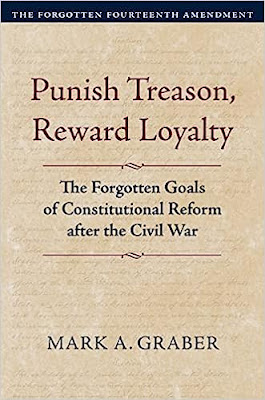
Mark A. Graber, Punish Treason, Reward Loyalty: The Forgotten Goals of Constitutional Reform after the Civil War (University of Kansas Press, 2023)
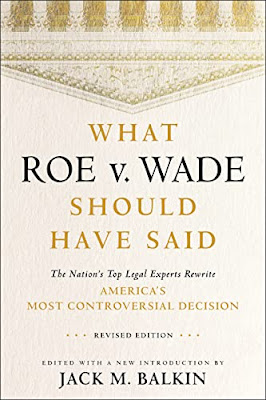
Jack M. Balkin, What Roe v. Wade Should Have Said: The Nation's Top Legal Experts Rewrite America's Most Controversial Decision - Revised Edition (NYU Press, 2023)

Andrew Koppelman, Burning Down the House: How Libertarian Philosophy Was Corrupted by Delusion and Greed (St. Martin’s Press, 2022)

Gerard N. Magliocca, Washington's Heir: The Life of Justice Bushrod Washington (Oxford University Press, 2022)
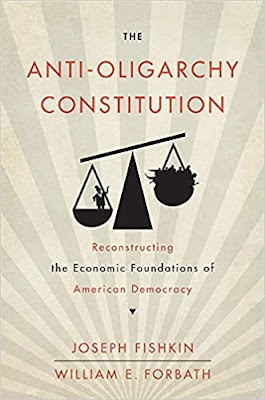
Joseph Fishkin and William E. Forbath, The Anti-Oligarchy Constitution: Reconstructing the Economic Foundations of American Democracy (Harvard University Press, 2022)
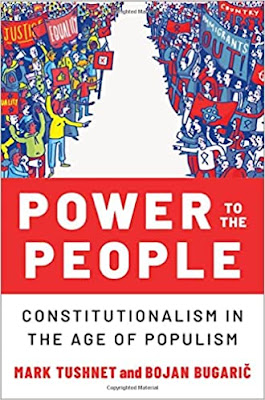
Mark Tushnet and Bojan Bugaric, Power to the People: Constitutionalism in the Age of Populism (Oxford University Press 2021).

Mark Philip Bradley and Mary L. Dudziak, eds., Making the Forever War: Marilyn B. Young on the Culture and Politics of American Militarism Culture and Politics in the Cold War and Beyond (University of Massachusetts Press, 2021).

Jack M. Balkin, What Obergefell v. Hodges Should Have Said: The Nation's Top Legal Experts Rewrite America's Same-Sex Marriage Decision (Yale University Press, 2020)

Frank Pasquale, New Laws of Robotics: Defending Human Expertise in the Age of AI (Belknap Press, 2020)

Jack M. Balkin, The Cycles of Constitutional Time (Oxford University Press, 2020)

Mark Tushnet, Taking Back the Constitution: Activist Judges and the Next Age of American Law (Yale University Press 2020).

Andrew Koppelman, Gay Rights vs. Religious Liberty?: The Unnecessary Conflict (Oxford University Press, 2020)

Ezekiel J Emanuel and Abbe R. Gluck, The Trillion Dollar Revolution: How the Affordable Care Act Transformed Politics, Law, and Health Care in America (PublicAffairs, 2020)

Linda C. McClain, Who's the Bigot?: Learning from Conflicts over Marriage and Civil Rights Law (Oxford University Press, 2020)
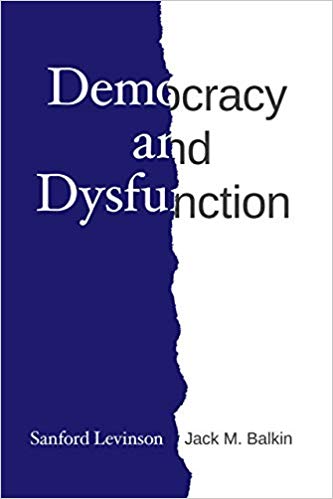
Sanford Levinson and Jack M. Balkin, Democracy and Dysfunction (University of Chicago Press, 2019)

Sanford Levinson, Written in Stone: Public Monuments in Changing Societies (Duke University Press 2018)

Mark A. Graber, Sanford Levinson, and Mark Tushnet, eds., Constitutional Democracy in Crisis? (Oxford University Press 2018)

Gerard Magliocca, The Heart of the Constitution: How the Bill of Rights became the Bill of Rights (Oxford University Press, 2018)

Cynthia Levinson and Sanford Levinson, Fault Lines in the Constitution: The Framers, Their Fights, and the Flaws that Affect Us Today (Peachtree Publishers, 2017)

Brian Z. Tamanaha, A Realistic Theory of Law (Cambridge University Press 2017)

Sanford Levinson, Nullification and Secession in Modern Constitutional Thought (University Press of Kansas 2016)

Sanford Levinson, An Argument Open to All: Reading The Federalist in the 21st Century (Yale University Press 2015)

Stephen M. Griffin, Broken Trust: Dysfunctional Government and Constitutional Reform (University Press of Kansas, 2015)

Frank Pasquale, The Black Box Society: The Secret Algorithms That Control Money and Information (Harvard University Press, 2015)

Bruce Ackerman, We the People, Volume 3: The Civil Rights Revolution (Harvard University Press, 2014)
Balkinization Symposium on We the People, Volume 3: The Civil Rights Revolution

Joseph Fishkin, Bottlenecks: A New Theory of Equal Opportunity (Oxford University Press, 2014)

Mark A. Graber, A New Introduction to American Constitutionalism (Oxford University Press, 2013)

John Mikhail, Elements of Moral Cognition: Rawls' Linguistic Analogy and the Cognitive Science of Moral and Legal Judgment (Cambridge University Press, 2013)

Gerard N. Magliocca, American Founding Son: John Bingham and the Invention of the Fourteenth Amendment (New York University Press, 2013)

Stephen M. Griffin, Long Wars and the Constitution (Harvard University Press, 2013)

Andrew Koppelman, The Tough Luck Constitution and the Assault on Health Care Reform (Oxford University Press, 2013)

James E. Fleming and Linda C. McClain, Ordered Liberty: Rights, Responsibilities, and Virtues (Harvard University Press, 2013)
Balkinization Symposium on Ordered Liberty: Rights, Responsibilities, and Virtues

Andrew Koppelman, Defending American Religious Neutrality (Harvard University Press, 2013)

Brian Z. Tamanaha, Failing Law Schools (University of Chicago Press, 2012)

Sanford Levinson, Framed: America's 51 Constitutions and the Crisis of Governance (Oxford University Press, 2012)

Linda C. McClain and Joanna L. Grossman, Gender Equality: Dimensions of Women's Equal Citizenship (Cambridge University Press, 2012)

Mary Dudziak, War Time: An Idea, Its History, Its Consequences (Oxford University Press, 2012)

Jack M. Balkin, Living Originalism (Harvard University Press, 2011)

Jason Mazzone, Copyfraud and Other Abuses of Intellectual Property Law (Stanford University Press, 2011)

Richard W. Garnett and Andrew Koppelman, First Amendment Stories, (Foundation Press 2011)

Jack M. Balkin, Constitutional Redemption: Political Faith in an Unjust World (Harvard University Press, 2011)

Gerard Magliocca, The Tragedy of William Jennings Bryan: Constitutional Law and the Politics of Backlash (Yale University Press, 2011)

Bernard Harcourt, The Illusion of Free Markets: Punishment and the Myth of Natural Order (Harvard University Press, 2010)

Bruce Ackerman, The Decline and Fall of the American Republic (Harvard University Press, 2010)
Balkinization Symposium on The Decline and Fall of the American Republic

Ian Ayres. Carrots and Sticks: Unlock the Power of Incentives to Get Things Done (Bantam Books, 2010)

Mark Tushnet, Why the Constitution Matters (Yale University Press 2010)
Ian Ayres and Barry Nalebuff: Lifecycle Investing: A New, Safe, and Audacious Way to Improve the Performance of Your Retirement Portfolio (Basic Books, 2010)
.jpg)
Jack M. Balkin, The Laws of Change: I Ching and the Philosophy of Life (2d Edition, Sybil Creek Press 2009)

Brian Z. Tamanaha, Beyond the Formalist-Realist Divide: The Role of Politics in Judging (Princeton University Press 2009)
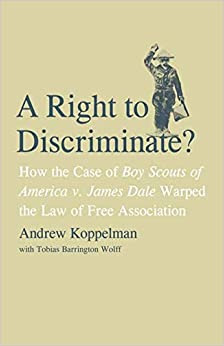
Andrew Koppelman and Tobias Barrington Wolff, A Right to Discriminate?: How the Case of Boy Scouts of America v. James Dale Warped the Law of Free Association (Yale University Press 2009)

Jack M. Balkin and Reva B. Siegel, The Constitution in 2020 (Oxford University Press 2009)
Heather K. Gerken, The Democracy Index: Why Our Election System Is Failing and How to Fix It (Princeton University Press 2009)

Mary Dudziak, Exporting American Dreams: Thurgood Marshall's African Journey (Oxford University Press 2008)

David Luban, Legal Ethics and Human Dignity (Cambridge Univ. Press 2007)

Ian Ayres, Super Crunchers: Why Thinking-By-Numbers is the New Way to be Smart (Bantam 2007)

Jack M. Balkin, James Grimmelmann, Eddan Katz, Nimrod Kozlovski, Shlomit Wagman and Tal Zarsky, eds., Cybercrime: Digital Cops in a Networked Environment (N.Y.U. Press 2007)
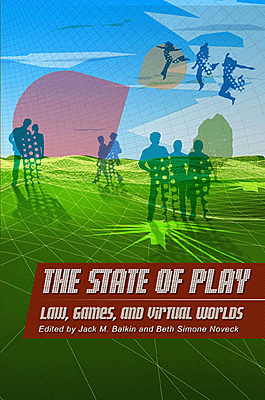
Jack M. Balkin and Beth Simone Noveck, The State of Play: Law, Games, and Virtual Worlds (N.Y.U. Press 2006)

Andrew Koppelman, Same Sex, Different States: When Same-Sex Marriages Cross State Lines (Yale University Press 2006)
Brian Tamanaha, Law as a Means to an End (Cambridge University Press 2006)
Sanford Levinson, Our Undemocratic Constitution (Oxford University Press 2006)
Mark Graber, Dred Scott and the Problem of Constitutional Evil (Cambridge University Press 2006)
Jack M. Balkin, ed., What Roe v. Wade Should Have Said (N.Y.U. Press 2005)
Sanford Levinson, ed., Torture: A Collection (Oxford University Press 2004)
Balkin.com homepage
Bibliography
Conlaw.net
Cultural Software
Writings
Opeds
The Information Society Project
BrownvBoard.com
Useful Links
Syllabi and Exams